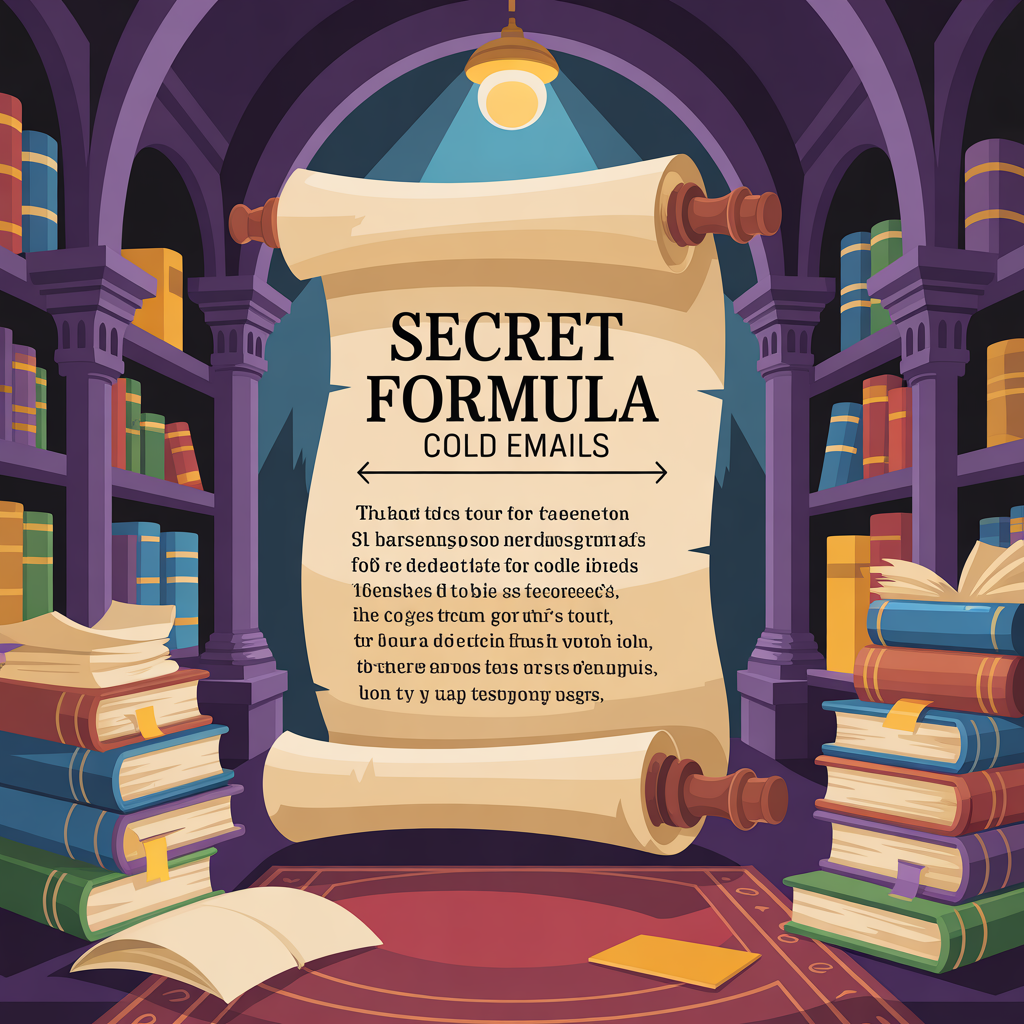Cold emails can open doors to new opportunities — clients, partnerships, collaborations, and even jobs. But let’s be honest: most cold emails get ignored.
Why? Because they sound robotic, self-centered, or irrelevant to the reader’s needs.
The truth is, cold emailing isn’t just about sending messages — it’s about building a first impression that sparks interest and trust.
In this blog, we’ll share a proven formula for writing cold emails that actually get replies, even if the recipient has never heard of you before.
1. Understand the Goal of a Cold Email
Before you write a single word, understand what your cold email should really do.
The goal is not to sell immediately — it’s to start a conversation.
Think of it as knocking on someone’s door politely and introducing yourself. You’re not trying to close a deal in the first message — you’re opening a channel of communication.
Your objective:
Get them interested enough to reply.
2. Do Your Research Before Writing
Personalization is the foundation of effective cold emailing.
Before you reach out, spend a few minutes learning about the recipient — their company, role, or recent work.
You can personalize based on:
- Their company achievements
- A recent LinkedIn post or article
- A problem they might be facing
Example:
“I noticed your brand recently expanded into Europe — congratulations! We’ve helped several apparel companies streamline communication with new distributors using AI tools.”
This small touch shows effort, builds trust, and immediately separates you from 90% of generic senders.
3. Craft a Compelling Subject Line
Your subject line decides whether your email gets opened or ignored.
Make it personal, relevant, and value-driven.
Examples:
✅ “Quick idea to boost your marketing response rate”
✅ “Ali, I noticed your team is scaling up — thought this could help”
✅ “Helping Sialkot apparel brands reach more clients online”
Avoid clickbait or all-caps subjects — they damage credibility. Focus on being natural yet intriguing.
4. Open with Connection, Not a Pitch
Start your email by building rapport. Avoid generic intros like “Hope you’re doing well.” Instead, open with something meaningful.
Example:
“I came across your LinkedIn post about improving team efficiency — really insightful! We’ve been working on something similar that I think could complement your approach.”
This opening feels conversational, personal, and authentic — not automated.
5. Explain Your Purpose Clearly
After you’ve connected, briefly explain why you’re reaching out. Keep it short, factual, and reader-focused.
Example:
“I’m reaching out because our AI writing tool has helped marketing teams like yours save hours on email communication while increasing response rates.”
Notice it’s not about “selling” — it’s about offering potential value.
6. Showcase Value, Not Features
Don’t just describe what you do — explain how it helps them.
People don’t care about your product’s features; they care about outcomes.
Feature-based: “Our tool generates automated emails.”
Value-based: “Our tool helps your team send professional follow-ups in minutes, saving hours every week.”
Use benefit-driven language that solves a problem or makes life easier.
7. Keep It Short and Skimmable
A perfect cold email should be under 150 words.
Executives and decision-makers are busy — they don’t have time to read essays.
Structure your message like this:
- 1 line of personalization
- 2 lines of purpose/value
- 1 clear call-to-action
Example format:
“Hi Sarah,
I saw your recent expansion into Germany — great move! We help apparel exporters automate client communications with AI-generated emails, saving time and improving conversions.
Would you be open to a quick 10-minute chat this week to explore how this could fit your team?”
Concise, polite, and effective.
8. Include a Clear Call-to-Action (CTA)
Always end with a simple, low-pressure next step. Don’t ask for too much upfront — just enough to continue the conversation.
Good CTAs include:
- “Would you be open to a short 10-minute call?”
- “Can I send you a quick demo link?”
- “Would you like to see how other brands are using this?”
The key is to make it easy to say yes.
9. Add a Professional Signature
Include your full name, company name, role, and contact details. This builds legitimacy and makes it easier for the recipient to verify who you are.
Example:
Ali Raza
Business Development Manager | AI WritePro
📧 ali@aiwritepro.com | 🌐 www.aiwritepro.com
A clean, minimal signature enhances credibility and trust.
10. Follow Up — But Do It Right
Most replies come after the second or third email, not the first.
Follow up politely after 3–5 days if you don’t receive a response.
Example Follow-Up:
“Hi Sarah,
Just following up in case you missed my last email. I’d love to share a short case study on how we helped another apparel brand improve their client response time by 60%. Would you be open to taking a quick look?”
Polite persistence shows professionalism, not desperation.
11. Bonus Tip: Use AI to Personalize at Scale
Writing dozens of personalized cold emails manually is time-consuming.
That’s where AI can help. Tools like our AI Email Writer can:
- Personalize greetings and tone automatically
- Suggest subject lines that perform better
- Create reader-specific CTAs
- Shorten or rephrase text for clarity
With AI support, you can send hundreds of customized cold emails — while still sounding human and authentic.
Example Cold Email Template
Subject: “Quick idea to improve your outreach results”
Body:
Hi John,
I came across your recent post about scaling your brand outreach — great insights! We’ve helped small marketing teams like yours save hours using our AI Email Writer, which automatically drafts personalized follow-ups and campaign emails.
Would you be open to a 10-minute call this week to explore how this could support your upcoming campaigns?Best regards,
Ali Raza
AI WritePro
This short, friendly, and relevant email is designed for replies, not rejections.
Conclusion
Cold emailing doesn’t have to be scary or spammy. When written with personalization, purpose, and clarity, your message stands out in a crowded inbox.
Remember the formula:
Personalization + Value + Clarity + CTA = Replies.
And if you want to create professional, high-converting cold emails without writing from scratch, try our AI Email Writer Tool — it helps you write human-like, persuasive messages in seconds.


